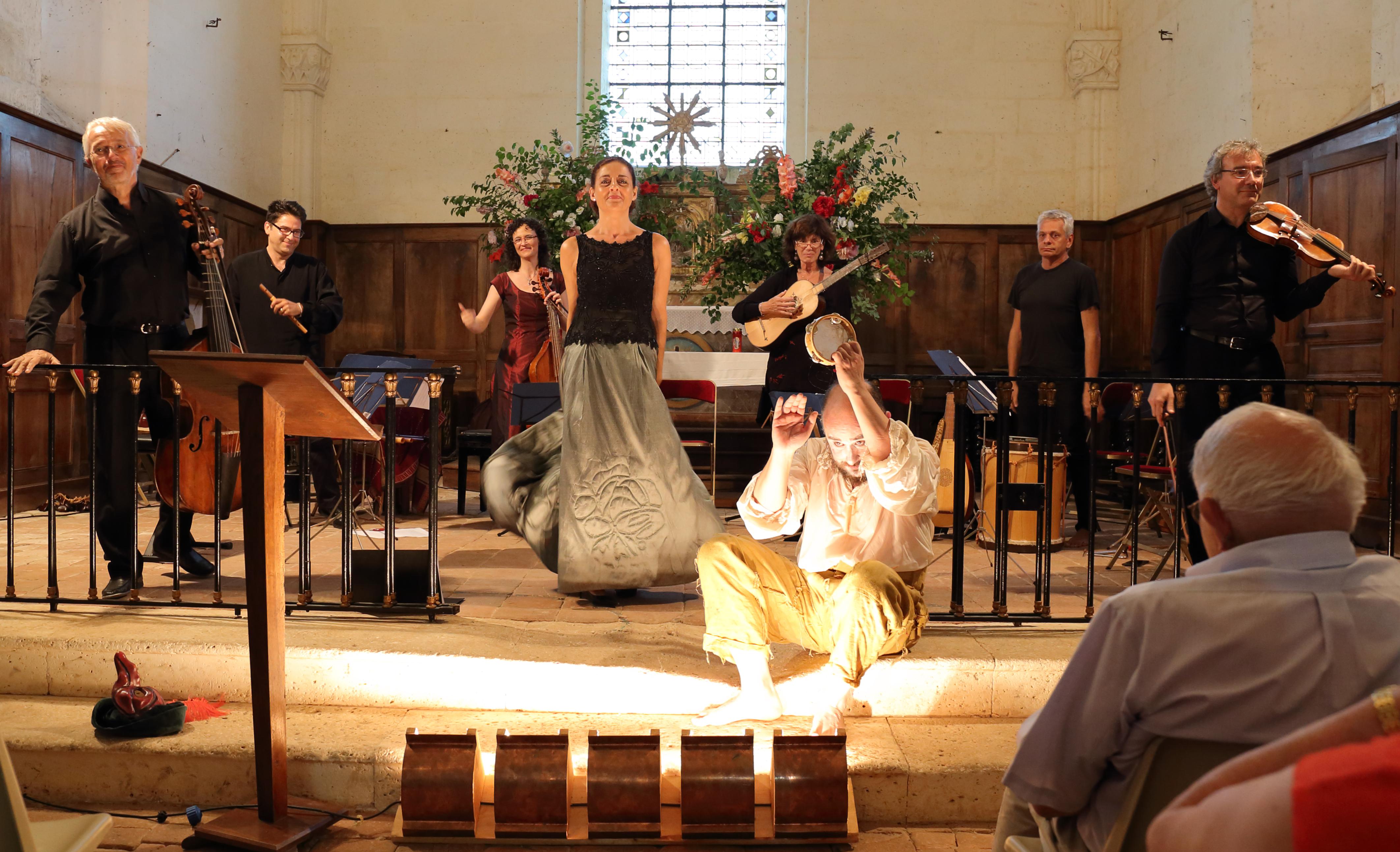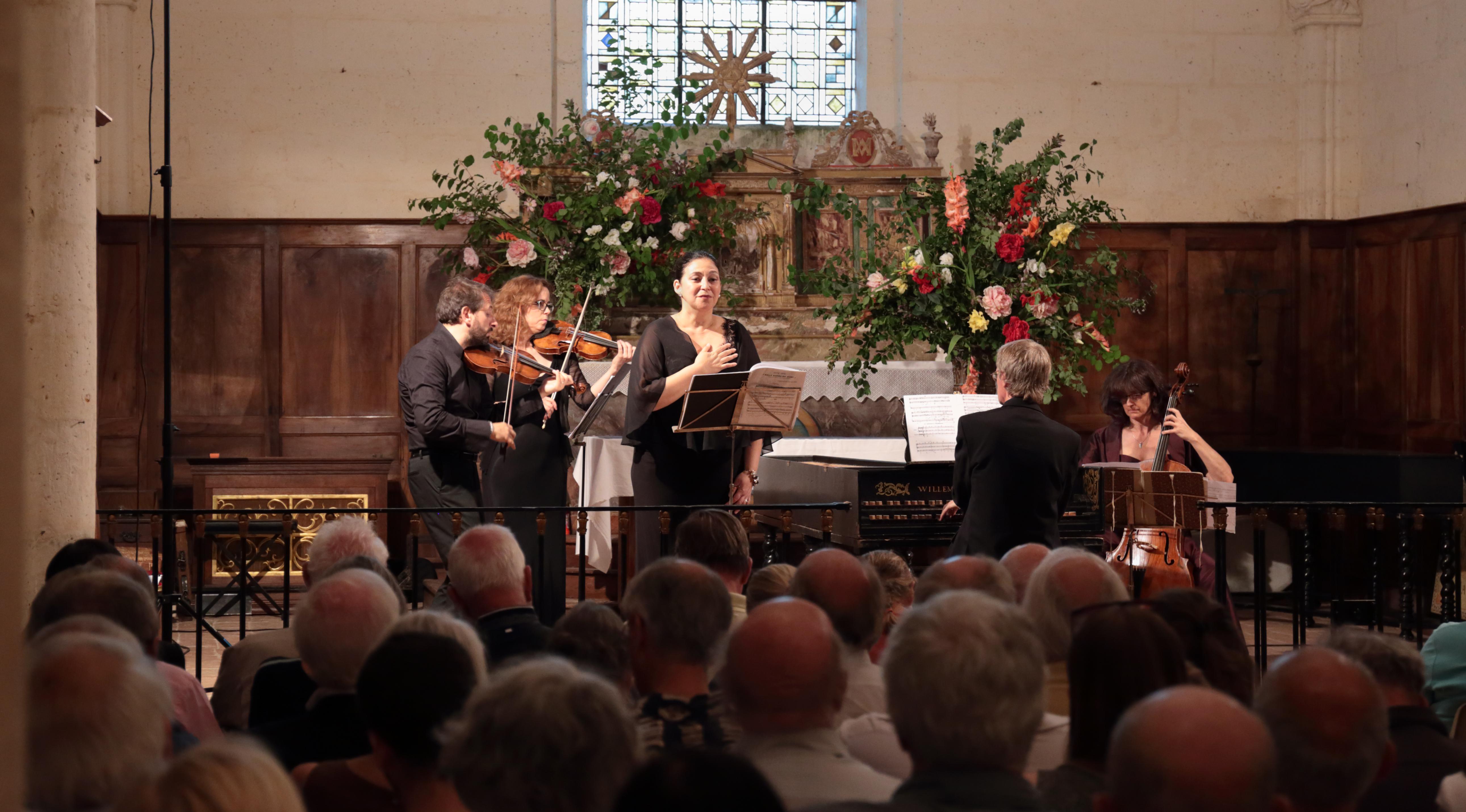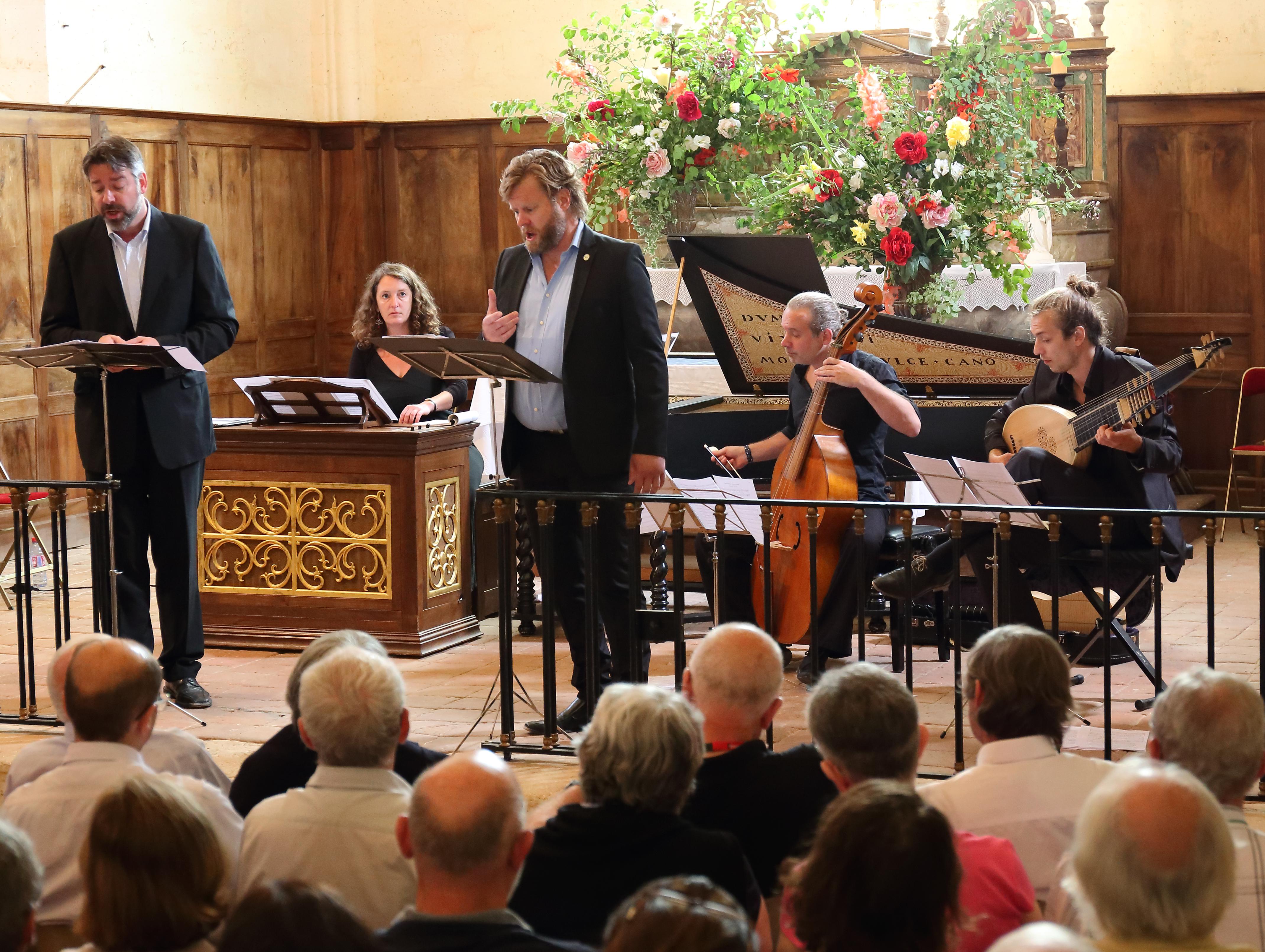Journal for the study and practice of early music
LIM Editrice [2015]. 222 pp, €24 (€29 outside of Italy) ISBN 978 88 7096 8125
recercare@libero.it; lim@lim.it – www.lim.it
The current issue of Ricercare has six studies in English and one in Italian, all with summaries in both languages, and a list of books received, but no book reviews. The journal is dedicated to Italian musical culture, and, as usual, the articles are presented in roughly chronological order by subject matter. This time four are confined to the 17th century, the first two on earlier periods.
Lucia Marchi is an Italian musicologist who teaches at Northeastern Illinois University and DePaul University of Chicago. She has done critical editions of Ingegneri and Marenzio and in ‘For whom the fire burns: medieval images of Saint Cecilia and music’ she takes us back to the 14th- to 16th-century iconographic and literary treatment of Cecilia (a Roman of the 5th century) rather different from the familiar Baroque image of her. There are numerous surprises, from her hatred of played music to the cult figure she cut in the Trecento for surviving her brutal tortures, and the theme of fire, which her chastity protected her from. A hidden reference to her as the object of a courtier’s love in a caccia by Nicolò da Perugia opens the door to speculation on sacred symbols in secular music, and especially in the Middle Ages.
Bonnie J. Blackburn, of Oxford University, writes about Nicolò Sconvelt, a German lutenist and lute maker who achieved fame in the Scuole of 15th century Venice. Blackburn discusses a great deal of documentation, about other lute makers as well, and includes plates of Gentile Bellini’s ‘Procession in Piazza San Marco’ (1496) and Lazzaro Bastiani’s ‘Donation of the relic of the true cross’ (1494), containing portraits of the musicians who are known to have been hired for the event. Documentation tells us that Sconvelt became a maker of lute strings late in life, and the Bastiani painting shows him in the process of putting three new strings on a lute. Details about his last years are documented by two wills he made, one in 1498, the other five years later.
The lengthy title of Marco Di Pasquale’s study sounds more obscure than it is, and it doesn’t translate readily into English. A clarifying paraphrase would be ‘Giovanni Gabrieli and one union of organists, and four [unions] of other [sorts of] musicians: unpublished documents on musical [freelance] trade union cooperation in Venice at the beginning of the 17th century’. After the compagnia of eight of the most famous organists, there were three unions of violinists and one of singers (priests or monks). Documents are included after this thorough discussion, but there are more questions than conclusions about other, undiscovered, such unions, and how they operated. Di Pasquale teaches history of music at the Conservatory of Vicenza, very close to Venice, but his main research is on the 19th century, so his study calls attention to the need for other scholars to delve into archives to fill out the picture.
Rebecca Cypress, whose new book is Curious and Modern Inventions. Instrumental Music as Discovery in Galileo’s Italy (University of Chicago Press), contributes to this issue: ‘Frescobaldi’s Toccate e partite .. libro primo (1615; 1616) as a pedagogical text. Artisanship, imagination, and the process of learning’. She wants to focus, also here, on the strategies of learning. Readers will find her examples of formal changes, rewritings, and substitutions that Frescobaldi made for the second printing of Book One noteworthy, but his keyboard works were already conceptually and technically advanced in their first printing. Comparison with the intabulations that Diruta included in Il Transilvano obviously show an enormous development. Only Diruta was writing a tutor, to be used autodidactically, and Frescobaldi was publishing his music. In addition, some of the revisions were simply necessitated by changes in the layout – he removed or shortened some pieces in order to add or lengthen others. So it just isn’t a fact or logical assumption that Frescobaldi’s purpose was didactic, or that his toccatas and variations constitute a method for acquiring the skills to play them, as Cypress concludes.
Diruta, in his imaginary dialogue with an emissary from the Transylvanian court, was symbolically exporting the keyboard technique he had learned from his Venetian masters. The notational limitations of movable type for printing music make even his simple examples relatively hard to read, his economical verbal instructions essential. He warned that his apparently dogmatic Good/Bad paired fingerings would even have to be reversed, sometimes, to negotiate ornaments, accidentals or particular rhythmic figures smoothly. Therefore, regarding fingering and hand movements, his avant-garde pedagogy was based on the adaptation of the body when the mind had prepared for the physical realization of difficult passages.
Frescobaldi’s Toccate… of 1615, on the other hand, was the first engraved keyboard print for cimbalo, a print visually comparable to a fair manuscript. Cypress never mentions this crucial innovation, a highly enhanced opportunity to notate simultaneous passages, effetti and affetti, in a tablature free of the constraint of voice leading, where the two staves showed which hand was to play which notes. His aim was to circulate his own challenging music, and not to write a keyboard ‘method’. His remarkable prefaces about the agogics of his often spontaneous-sounding music seem to me an obligatory reminder to players of their rhetorical role, not because the pieces themselves are didactic, but because even engraved music requires creative interpretation. He was writing for consummate musicians.
Let me make one more digression: many of Bach’s keyboard compendia were conceived for teaching expression, execution, and composition. So why do editions of the Inventions and Sinfonias not even respect their unique, methodical, original order, the order in which one is supposed to study them? Of Frescobaldi, Cypress says that many figurations are used repeatedly for practice in doing them! If it’s far-fetched to think his music had that purpose, it is not a criticism of Frescobaldi that he neither aspired to the methodical utility of Bach’s Klavierübungen nor stooped to the mechanical approach we associate with Czerny. Let’s remember that Venice (and Rome) were full of valent’uomini (virtuosi), but none played as famously well as Frescobaldi. He not only engraved his works for their benefit, but hinted at essential aspects of style beyond the pale of musical notation. Yes, these were instructions, but for those who would know exactly what he meant.
Chiara Granata (‘ “Un’arpa grande tutta intagliata e dorata”. New documents on the Barberini harp’) and luthier Dario Pontiggia (‘Barberini harp. Data sheets’) give us a thorough look at the instrument itself, the Roman instrument builders of the time, and hypotheses about the most plausible makers and the probable time of manufacture, based on new documents. In fact, Recercare, from its very first issue in 1989, is a periodical of studies, not about studies. The title means Research. In this joint article one finds a wealth of historical cultural information, as well as the most detailed drawings, photographs and measurements of the instrument. It is all here, from the sizes of every hole on the soundboard, to the string spacings in tenths of a millimeter, and much more.
Cory M. Gavito, a jazz keyboardist and musicologist at Oklahoma City University, is about to spend a year in Florence at Harvard’s Villa I Tatti, the best musicological library in Italy, to dedicate his sabbatical year to the theme of his present article: ‘Oral transmission and the production of guitar tablature books in seventeenth-century Italy’. His 2006 University of Texas dissertation The alfabeto Song in Print, 1610 – ca. 1665: Neapolitan Roots, Roman Codification, and “il Gusto Popolare” viewable at http://docplayer.it/7328855-Copyright-cory-michael-gavito.html was a detailed history of this vast subject, which should generate countless studies, analyses and discoveries of interest to singers and accompanists. The present article is just one. The widespread addition of chord progressions in a popular alphabetically coded notation (translatable into 5-course guitar tablature, but indicating by single letters specific positions of strummed chords) is also a suggestive adjunct or alternative to figured basso continuo. Here Gavito compares some lesser-known settings from this repertory, concluding from the concordances that as they circulated they became models for other songs. Loosely referred to as ‘oral practice’ (actually oral and instrumental, transmitted aurally or in writing), they infused and merged with new composed pieces by prominent composers. Thanks to the autodidactic function of these guitar books, starting from Montesardo, we have a multitude of them today, a vast amount of material from which we can plausibly trace music revised and incorporated in compositions by the likes of Monteverdi, Brunelli, Marini, Landi, Saracini… perhaps an ever-growing list extending throughout the 17th century.
Barbara Sachs






